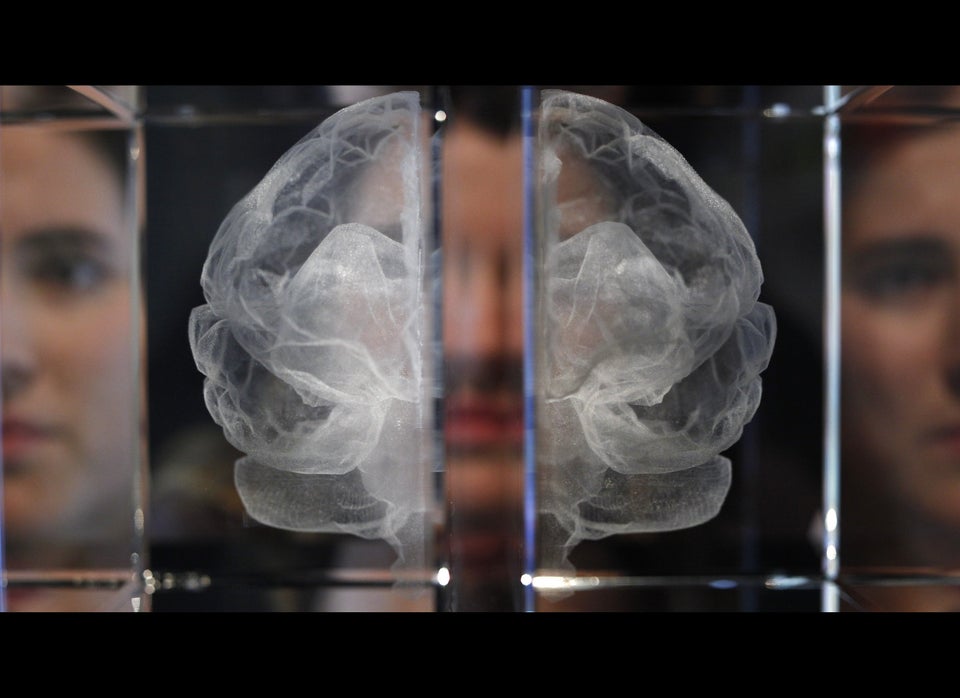
By Moheb Costandi
Mice transplanted with a once-discounted class of human brain cells have better memories and learning abilities than normal counterparts, according to a new study. Far from a way to engineer smarter rodents, the work suggests that human brain evolution involved a major upgrade to cells called astrocytes.
Astrocytes are one of several types of glia, the other cells found alongside neurons in the nervous system. Although long thought to merely provide support and nourishment for neurons, it's now clear that astrocytes are vital for proper brain function. They are produced during development from stem cells called glial progenitors.
In 2009, Steven Goldman of the University of Rochester Medical Center in New York and his colleagues reported that human astrocytes are bigger, and have about 10 times as many fingerlike projections that contact other brain cells and blood vessels, than those of mice. To further investigate these differences, they have more recently grafted fluorescently labeled human glial progenitors into the brains of newborn mice and examined the animals when they reached adulthood.
Most of the grafted cells remained as progenitors, but some matured into typical human-looking astrocytes. They connected to their mouse counterparts to form astrocyte networks that transmitted electrical signals. Furthermore, they propagated internal signals about three times faster than the mouse astrocytes and improved the strengthening of connections between neurons in the hippocampus, a process thought to be critical for learning and memory.
These human astrocytes apparently did so, the scientists suggest, by secreting a protein called tumor necrosis factor-α, which mouse astrocytes produce at much lower levels. This increased the number of receptors for the neurotransmitter glutamate in the membranes of mouse neurons, making the signaling between them far more efficient than mouse astrocytes alone.
Those differences translated into improvements on behavioral tests. Mice with human astrocytes performed better on memory experiments than those that had received mouse cell grafts, the team reports today in Cell Stem Cell. The human astrocyte-endowed rodents learned to fear a particular sound or part of their environment after associating them just once with an electric shock. This learning persisted for 3 days, during which time typical mice did not learn at all, despite being treated in exactly the same way. The mice with transplanted human cells also learned to find their way through a maze in about half the time and were better able to recognize familiar objects in new locations.
The results support the view that human brain evolution involved cellular specializations, including the elaboration of astrocyte structure and a boost in their ability to regulate communication between neurons at synapses, the researchers say.
These are "very interesting findings [that] strongly suggest that human astrocytes have an enhanced ability to control synapses," says neurobiologist Ben Barres of Stanford University in Palo Alto, California. But he adds that the study does not show that human astrocytes are genetically normal when engrafted into the mouse brain, and it does not rule out the idea that the improved learning and memory "could be due to the persisting progenitor cells."
"It would be interesting to see if they get the same effects by engrafting chimpanzee or macaque glia," adds evolutionary neuroanatomist Todd Preuss of the Yerkes National Primate Research Center at Emory University in Atlanta. This could determine whether the observed effects are due to properties that are unique to human cells or common to those of all primates.
Goldman acknowledges these limitations, but he believes that the work will lead to a new way of investigating neurological and psychiatric disorders. "We can generate glial progenitors from reprogrammed human skin cells," he says, "and have already created mice with glia from schizophrenic patients." Such animals would be better than existing animal models for testing potential new treatments, he suggests.
Chimeric mice could also provide more clues about brain evolution by helping researchers identify astrocyte specializations that are unique to humans. "Many neuroscientists are uncomfortable with open discussion of human specializations for fear that the adequacy of their animal model will be called into question," Preuss says, "so more research of this type would be informative."
